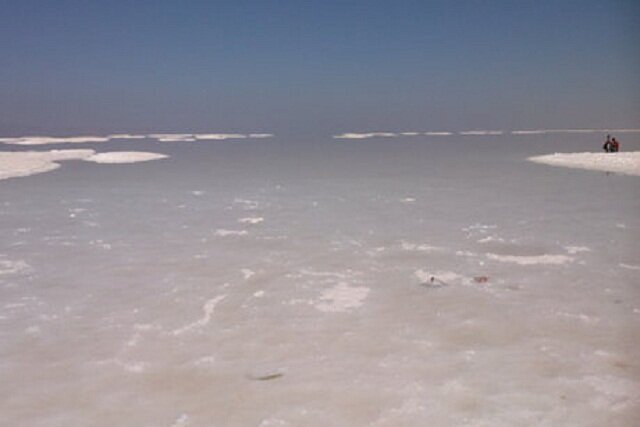Human factors hold 69% share in drying of Lake Urmia

TEHRAN – Researchers realized that the situation of Lake Urmia in the last 20 years is not fully related to lack of rainfall, which shows that the share of human factors has been higher.
Paleontological studies conducted by two Iranian researchers at the University of Miami on Lake Urmia show that even when the rainfall was 180 mm, the lake did not dry up, and this shows that the lake’s condition in recent years has been affected by human factors.
The level of Lake Urmia reached 1278 meters in 1995 and 1274 meters in 2005 and this amount reached 1270 meters in 2015.
The share of natural factors includes an 18 percent decrease in rainfall and a 1.5-degree increase in temperature over the past two decades.The share of natural factors in the drying of Lake Urmia is 31 percent, which includes an 18 percent decrease in rainfall and a 1.5-degree increase in temperature in the last two decades compared to the long term, and the share of human factors is 69 percent, which includes agricultural development and construction of dams and extraction from groundwater sources.
The amount of water consumption in the Urmia catchment area for the agricultural sector is 4699 million cubic meters and the consumption for drinking, health, and industry is 588 million cubic meters.
The water level drop of Lake Urmia was reduced by the efforts of the Lake Urmia Restoration Program; Unfortunately, for various reasons, the declining trend of water level follows the patterns of 2004, and we are witnessing a decline in the level of water.
Shared between West Azarbaijan and East Azarbaijan provinces in northwestern Iran, Lake Urmia, was once the largest salt-water lake in West Asia. It was home to many migratory and indigenous animals including flamingos, pelicans, egrets, and ducks, and attracted hundreds of tourists every year who had bathed in the water to take advantage of the therapeutic properties of the lake.
However, decades of long-standing drought spells and elevated hot summer temperatures that speed up evaporation as well as increased water demands in the agriculture sector shrank the lake drastically. In 1999 the volume of water which was at 30 billion cubic meters drastically decreased to half a billion cubic meters in 2013. Moreover, the lake's surface area of 5,000 square kilometers in 1997 shrunk to one-tenth of that of 500 square kilometers in 2013.
Lake's surface area has reached up to 2,917 square kilometers, indicating 1,582 square kilometers increase in comparison to 2013 when the Lake Urmia Restoration Program began.
The level of Lake Urmia has reached 1,271 meters, which indicates an increase of over 1.39 meters compared to the lowest volume recorded. However, it still needs 9.5 billion cubic meters of water to reach its ecological level.
The above-normal levels of rain came to help conservation measures to preserve Lake Urmia, but, this year, the drought and low rainfall are threatening the lake again.
FB/MG
Leave a Comment